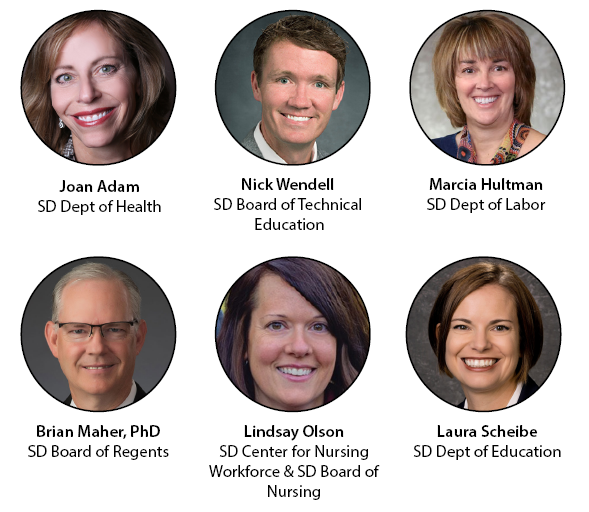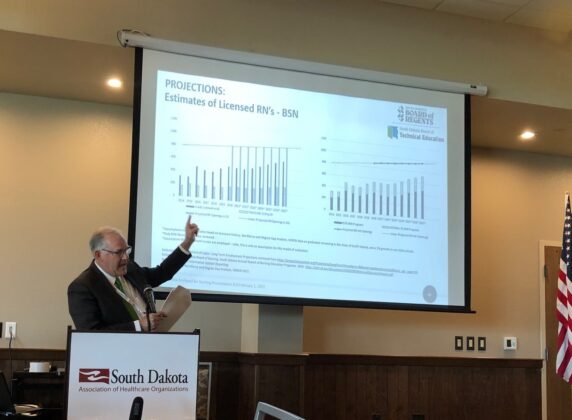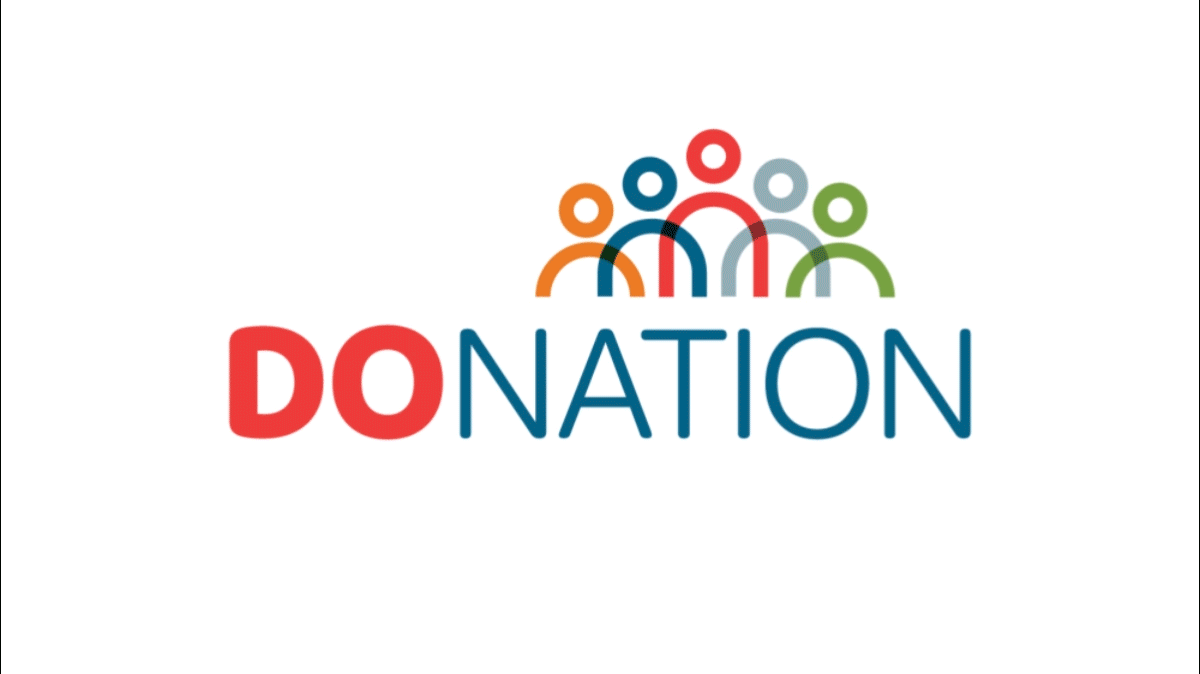The South Dakota Association of Healthcare Organizations brought together top policy makers and educational leaders to talk nursing workforce needs in South Dakota during the SDAHO annual Rural Health Leaders conference July 12-13, 2022, in Ft. Pierre. Attendees were treated to a robust panel conversation from state leaders, including members of the Governors cabinet. All focused on short- and long-term strategies surrounding our state’s nursing workforce and how to best utilize existing staff and increase the future nursing pipeline.
Joan Adam, Secretary of the South Dakota Department of Health kicked off the session titled: Workforce: Building a Strong Future for Nursing in South Dakota – An Office of Rural Health Overview. Sec. Adam told attendees that even within the SD Department of Health, she and her team have had to deal with their own internal workforce challenges. “We all share the common issue of workforce struggles. Positions that we were once fortunate to fill with registered nurses (RN’s) those roles we now have to think critically about what type of staff we can have fill the role. We now might use our nurses in a consultation role and technical assistance instead of having them lead some of our programs where they once did.” Sec. Joan Adam, SD Dept. of Health
Adam reminded participants that rural workforce challenges within healthcare have been ongoing for decades and now it’s become a national issue. “That is why events like this are perfect timing. Because more than ever we have the attention of our local, national and policy makers, federal funding groups that are helping to put resources into states to help them address the issue.” Sec. Joan Adam, SD Dept. of Health
Lindsay Olson with the South Dakota Center for Nursing Workforce and the South Dakota Board of Nursing shared the stage taking a deeper dive providing a snapshot from the 2021 Workforce Data, highlighting active supply numbers of RN’s and Licensed Practical Nurses (LPN’s) and where they are primarily employed in our state. For 2022 South Dakota currently has 19,441 actively licenses RNs compared to 18,693 in 2021. “61% are employed in an urban setting that is defined with populations more than 50,000 people. Then we have 20% of nurses are employed in micro rural regions, with populations greater than 10,000 people but less than 50,000 people. Then finally we have 19% of registered nurses employed in rural areas, with populations less than 10,000.” Lindsay Olson, SD Center for Nursing Workforce/ SD Board of Nursing.
Actively Licensed Practical Nurses (LPN’s) for 2022 sits at 2,682 compared to 2021 where the numbers topped at 2,591. 49% are employed in urban areas across South Dakota, with 51% employed in more rural communities.
South Dakota’s Secretary of Labor and Regulations, Marcia Hultman, shared statistics on workforce needs on a statewide basis impacting many industries. “We’ve known for 25 years that baby boomers were going to leave the workforce and the time is now. The youngest baby boomer is 60 years old today, so it’s no wonder how a majority have already left the workforce.”” Even with the challenges impacting South Dakota’s workforce, our state is seeing the lowest unemployment it’s seen in a long time at 2.3%. “3% unemployment is considered full employment, anytime you get to 3% or lower you start to get friction and employers have a hard time finding workers and we are well below that. South Dakota has one of the lowest unemployment rates in the nation and that trend continues today post-pandemic.” Sec. Marcia Hultman, SD Dept. of Labor, and Regulations
Hultman provided solutions to consider for participants. “A lot of our answers are in flexibility for retired folks and youth are the two biggest things employers can do. Folks in South Dakota are already working not one job but maybe two jobs, so maybe to a lesser existent in SD is childcare needs, it is a huge impact on someone’s flexibility to go into the workforce.” Marcia Hultman, SD Dept. of Labor and Regulations
Laura Scheibe with the South Dakota Department of Education shared information on programs available through our state’s K-12 system to better prepare the next generation of workers for the workforce. “I am here to help you better understand that if you are not engaging with the K-12 population, why you should be.” Scheibe says often it begins in middle school and there are many ways students find out about careers while in middle school, including career camps, job shadowing, South Dakota My Life, Career Exploration Class and family members. “We need to get kids out there and exposed, we need to help them see what it’s like to work in a clinic. This is where you as industry come in to help on this front.” COVID-19 has created a negative impact on reaching students to help them determine their career paths when going into college. “Connect with your local schools if you have not already because they want to connect with you, with your middle school and elementary schools now so you have that workforce when you need them. Sponsor education programs, offer those work-based learning opportunities and Build Dakota, it’s a fantastic program.” Laura Scheibe – SD Dept. of Education
along with Dr. Janice Minder, VP of Academic and Policy with the SD Board of Regents provided an overview of the SD Board of Regents and Technical Education. “We have a problem to solve, our healthcare needs are growing across the state and the Board of Regents, and the Board of Technical Education are committed to working together for training purposes and the development of a nursing workforce.” Dr. Brian Maher, SD Board of Regents, Executive Dir. Dr. Maher shared that South Dakota has seen a 5.7% job growth in RNs from 2016 to 2020, with an additional expected job growth of 1,703 nurses or 13.2% by 2028. Currently our state’s average RN age is 44.6, with 13.9% expected to leave or retire in the next five years. Dr. Janice Minder shared details regarding the Board of Regents efforts to increase the nursing pipeline for South Dakota, which included working with the state legislature and partners to increase capacity within facilities. “As we look at the pipeline and we increase access through affordability, I want to mention the Build Dakota scholarship and I want to give a thank you to Monument Health, Avera Health, Sanford Health, and all of the industry partners. We are helping 170 students go to college giving them access ability and 132 students were supported by industry partners.” Dr. Janice Minder, SD Board of Regents, VP for Academics and Policy.
Dr. Maher closed the session by outlining the path to success when working on increasing the nursing pipeline into the future. “This will require a lot of stuff that all of us have to do. Colleges and Universities will continue to work toward increased partnerships and enrollment strategies, that is who we are and that is what we do. The question we must get to and have to be able to answer is, how can we provide BSN opportunities to those already employed or how can we provide an increase in opportunities to gain credentials. What can we do to improve current employees’ situations to improve their credential status? What can we do to mitigate the out-migration of graduates? We want to make sure we are part of that conversation and must be at the table for that conversation.”
Here are some excerpts from the Workforce: Building a Strong Future for Nurses Rural Health Leaders Session.
For more information on upcoming events and education SDAHO hosts on healthcare topics, visit our event calendar.




